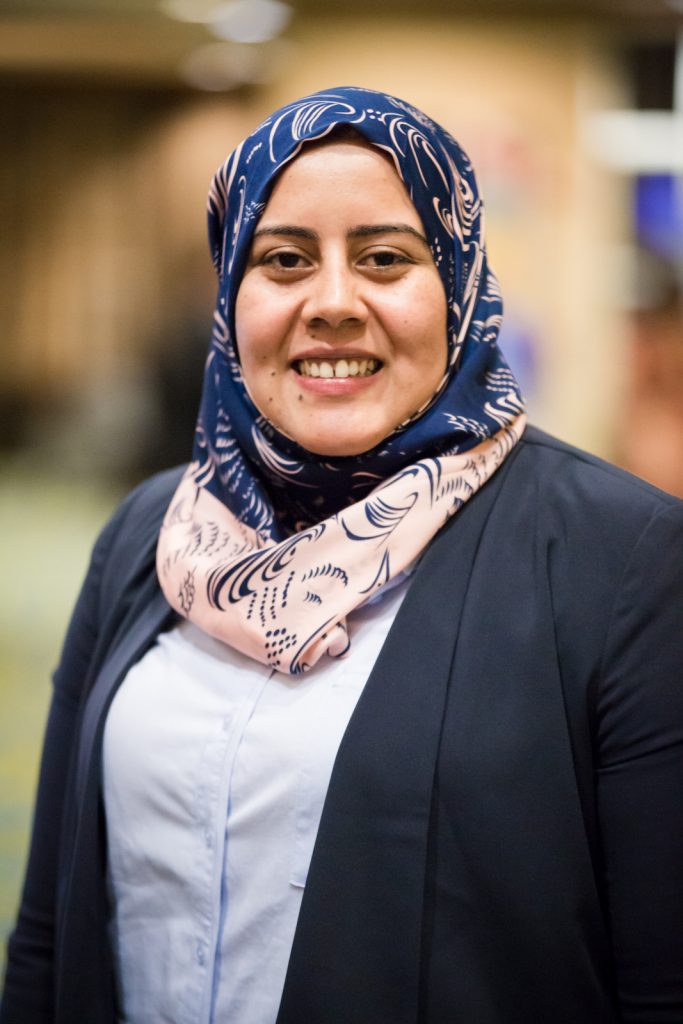https://advancenews.fiu.edu/women-in-research-amal-elawady/
Amal Elawady is an assistant professor of structural and wind engineering at the Department of Civil & Environmental Engineeringwithin the College of Engineering & Computing. While she’s, not a comic book superhero, she has a lot in common with Storm, one of Marvel’s X-Men – they both spend their time with weather systems, storm hazards, and wind.
Elawady received her Ph.D. in Civil and Environmental Engineering from the University of Western Ontario, Canada, which is well known for its pioneering wind engineering program, including the renowned Boundary Layer Wind Tunnel Laboratory (BLWTL) and the world’s first three-dimensional testing facility, the WindEEE Dome. Coming to FIU, with its famed state-of-the-art Wall of Wind facility, seemed a natural fit.

“The Wall of Wind is a research laboratory specialized in wind engineering and wind-structure interaction studies. It enables advanced research to study wind effects on various types of structures to enhance the resilience of the built environment against wind hazards,” Elawady says. “With the unique capabilities at the Wall of Wind to simulate hurricane winds up to Category 5 (sustained winds up to 157 mph) and the relative large testing section, we can really test structures at full scale. This is a big advantage for wind testing because we are able to minimize possible scaling effects.” The Wall of Wind is one of only 8 NHERI Experimental Facilities funded by the National Science Foundation (NSF) as a national facility.
Elawady is passionate about her work. “The ultimate goal of my research is to explore and test innovative concepts to protect homes, businesses, and infrastructure lifelines, and advance the knowledge to help prevent wind hazards from becoming societal disasters.”
Her studies involve large-scale wind tunnel testing, wind effects analysis to examine structural response, and design of structures against extreme wind events. “It’s important to understand behavior of structures during extreme wind events. Hurricane damage may result from wind and/or wind-driven rain in addition to flooding effects and storm surges,” Elawady says. “You can imagine that the damage can be even worse in developing countries where building codes are not enforced.”
She uses Cyclone Idai, a tropical cyclone which destroyed entire communities in Mozambique, Zimbabwe, and Malawi when it swept through southern Africa in March 2019, as an example. “There are countries who haven’t experienced frequent wind hazards in the past that are doing so now. A few years ago in Saudi Arabia, there was a failure of a crane inside the Grand Mosque in Mecca due to a wind storm, which is not something they’re accustomed to dealing with there. We’re seeing different events in different areas of the world.”
One such event Elawady studies is the phenomenon of downbursts, strong ground-level systems that blow in straight lines in all directions from the point of contact at ground level, often producing damaging winds. Her doctoral research focused on studying the behavior of power line structures under downburst wind storms, and has already impacted the field. She’s currently continuing her work on downbursts effects on power line structures through a National Science Foundation (NSF)-funded multi-disciplinary and multi-institutional project with Ohio State University.
Elawady has spent her major part of her career studying wind, but her first personal experience with hurricanes came in September 2017, when, just four months after joining FIU, Hurricane Irma swept through South Florida. “It was my first hurricane, and I wanted to stay in Miami. In the lab, we focus on structural responses to storms, not the human responses to storms, and I thought it was an opportunity to gain a new perspective,” she says. “While my experimental methods and philosophy of research hasn’t changed, the way I think about the process is different. It’s not just about the safety of the structure, it’s also the safety of the people inside.”
She is currently working on a state-funded project to study the aerodynamics of elevated structures – a common idea is to elevate structures to a safe level to mitigate flooding hazards, but once elevated, air movements and pressure under and on the sides of the house behave differently. Recently, she received funding from the Center for Wind Hazard and Infrastructure Performance (WHIP) which is the first of its kind under the NSF Industry/University Cooperative Research Center (I/UCRC) program to study the wind-driven rain effects on building façades.
FIU Women in Research is a regular feature of ADVANCE News that examines the impressive work female faculty members are doing at the university.
The post Women in Research: Amal Elawady appeared first on FIU Department of Civil and Environmental Engineering.